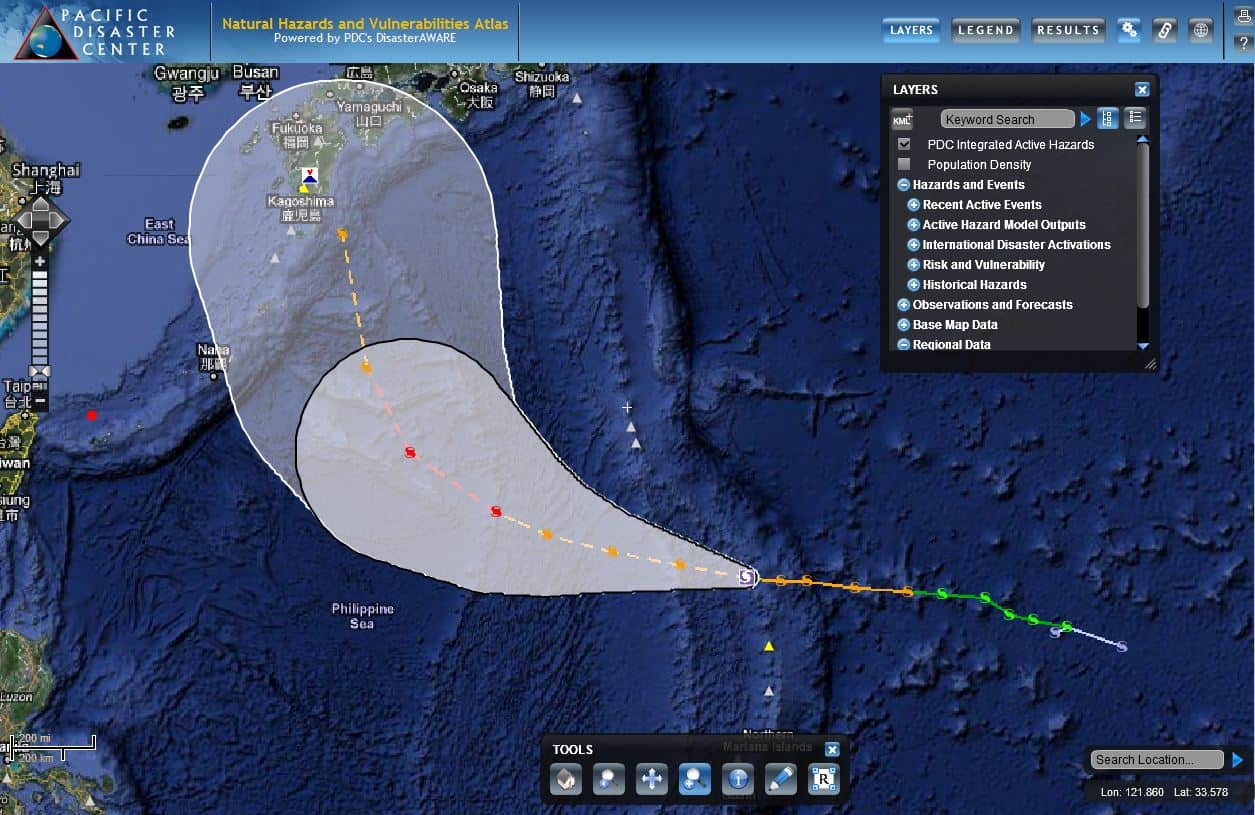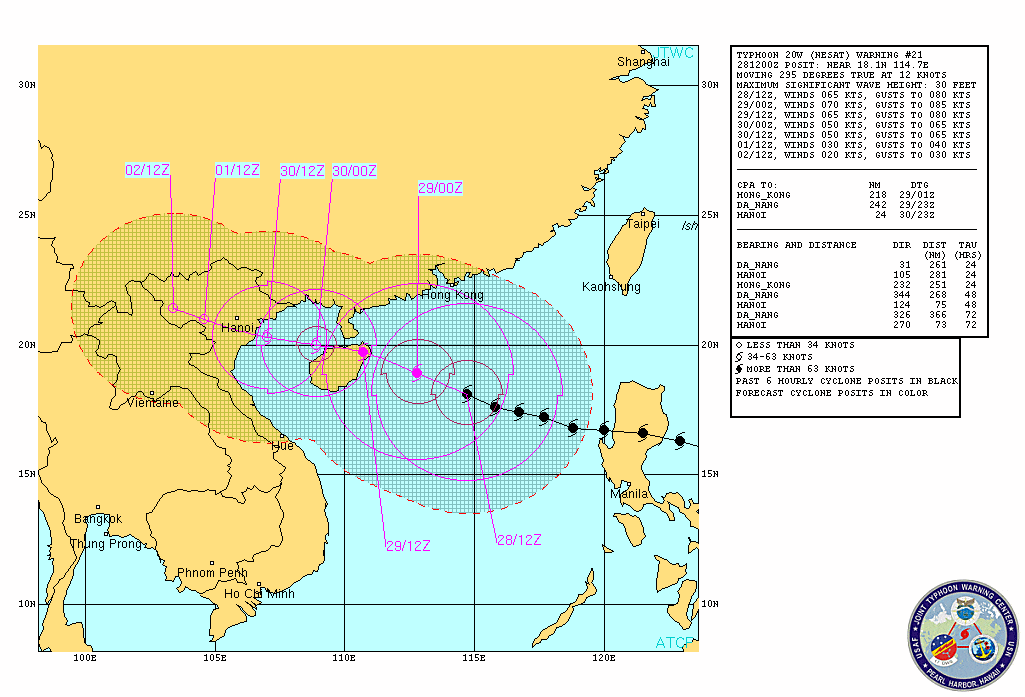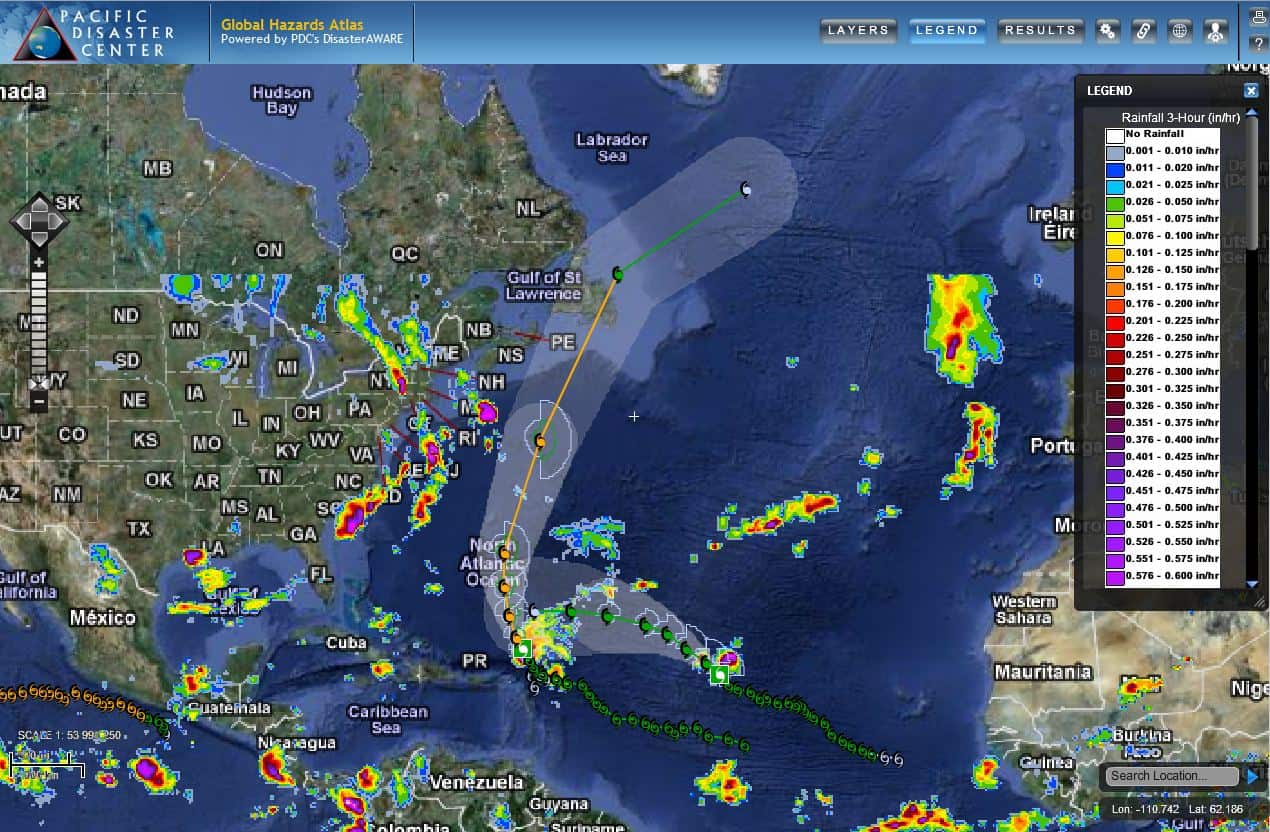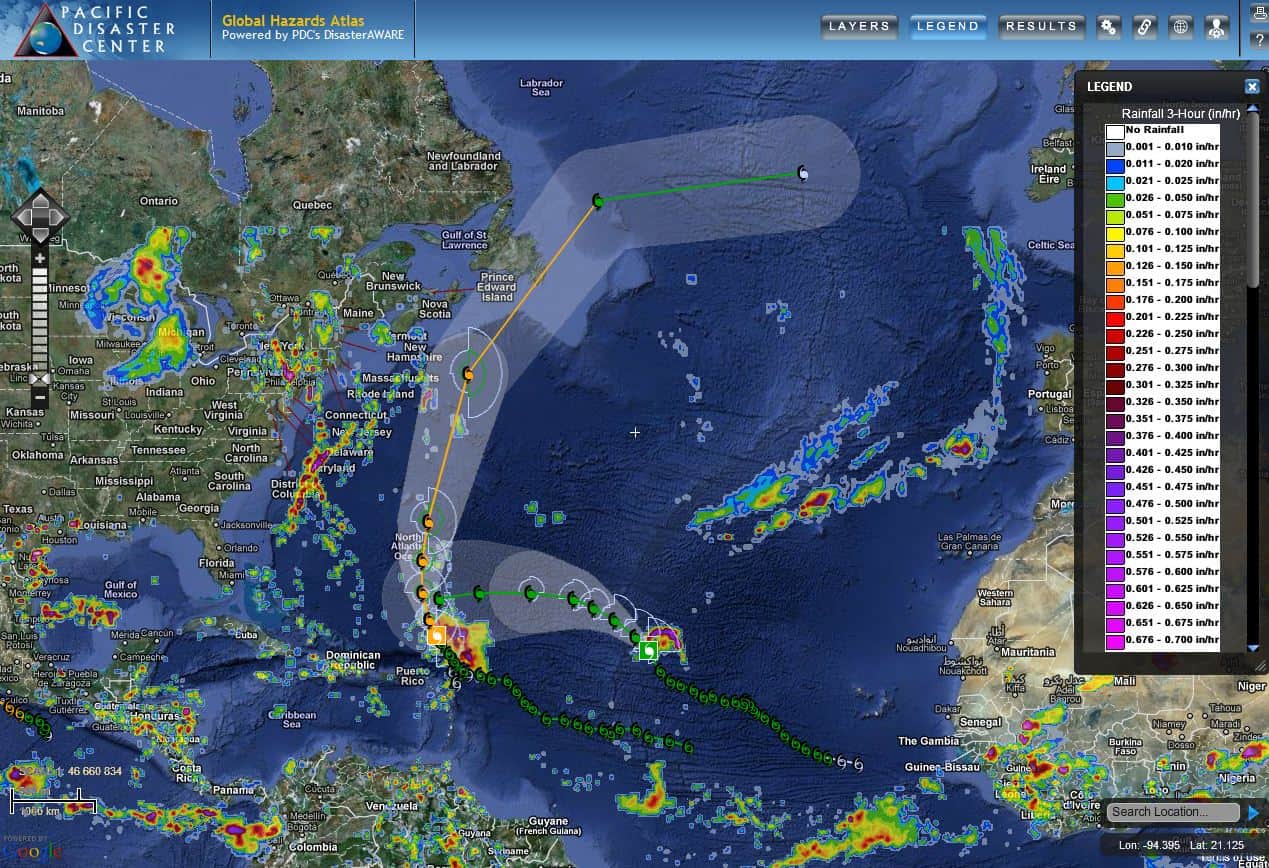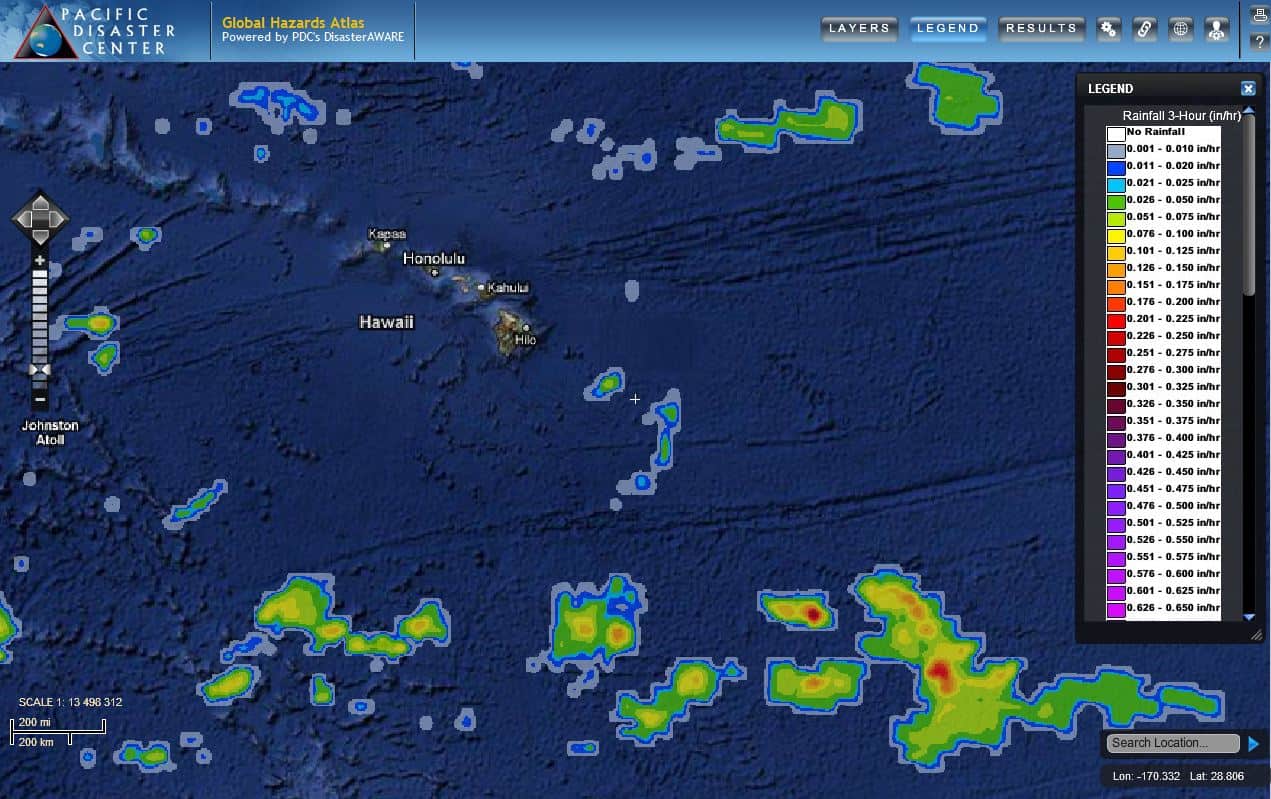Although floods are consistently ranked among the leading causes of natural disaster losses and fatalities, there has been a major gap in technology to help sense and anticipate flood risk on a global scale—until now. The NASA Disasters Program and Pacific Disaster Center (PDC) have joined forces, with funding from the Research Opportunities in Space and Earth Sciences, to develop and incorporate new flood monitoring and early warning technology within PDC’s DisasterAWARE® platform—a first milestone in the partnership which started in August of 2019. This new capability will support disaster management operations around the world.
During the recent extreme flooding that impacted New South Wales, Australia this past March, surpassing recorded levels from the last half century, Geoscience Australia on behalf of Emergency Management Australia engaged NASA Earth Science Applied Sciences Disasters program to help monitor the Australian floods. Using NASA’s newly developed remote sensing technologies and models, and PDC’s DisasterAWARE hazard monitoring and early warning system, officials were able to make more informed disaster response decisions by quickly understanding flood severity and extent.
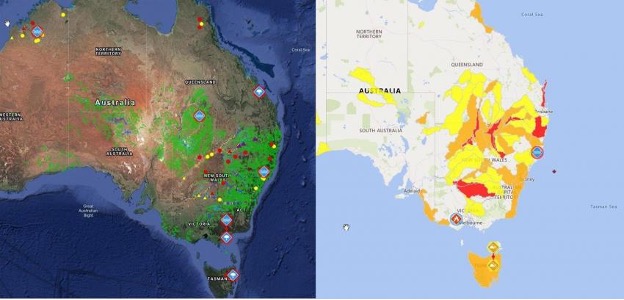
“This new technology uses a model-of-models approach and underlying flood risk data. The GFMS global flood model (shades of green, left image) tells us the severity of flooding in the watershed. The GloFAS model (colored points, left image) tells us the likelihood of an historic 2, 5, or 20 year flooding event. By combining these and other models, we can find where models agree, and increase the confidence of the final output (right image) for decision makers,” said PDC’s Deputy Executive Director Chris Chiesa. Chiesa further explained how this new capability will be operationalized to serve an entire global community of end-users who use PDC’s DisasterAWARE. “By integrating these new capabilities into DisasterAWARE, the NASA-derived information is able to reach decision makers with timely, life-saving information that will anticipate major flood events with the potential for widespread impacts to populations and infrastructure.” DisasterAWARE is used by tens of thousands of disaster management professionals, and the Disaster Alert mobile app has been downloaded nearly 2 million times.
According to PDC Automation and Modeling Lead Greg Hampe, next on the radar for the global flood modeling partnership with NASA is new machine learning technologies that will help provide hyper-localized flood early warning and analysis. “Applying machine learning tools to the model outputs will yield a focused and unified picture of flood risk. The results of this approach constantly improve over time as more data become available to ‘train’ the machine learning algorithm.”
At present, there is no single flood hazard modeling capability providing flood early warning for the entire the globe.
According to Margaret Glasscoe, the University of Alabama in Huntsville Principal Investigator for the NASA-PDC project, “The next phase of development planned with PDC will further streamline delivery of life-saving information and simplify navigating through multiple data sources. Disaster management decision makers and responders will be able to better anticipate major flooding events, improve response operations, and more quickly and effectively recover post-flood impact.”
NASA Earth Science Applied Sciences Disasters program and PDC are also actively collaborating on a global landslide detection and early warning technology as part of their common objective save lives, property, and critical infrastructure around the world. These are expected to be operationalized in DisasterAWARE by the end of 2022.
About PDC
PDC is an applied research center managed by the University of Hawai’i that develops new technologies and best practices to advance the field of disaster mitigation, preparedness, response, and recovery. We support the most demanding needs of nonprofits and government organizations worldwide in our collective missions to create a safer, more disaster resilient world.
About NASA’s Disasters Program
The Disasters program area of NASA’s Earth Science Applied Sciences Program uses Earth-observing data and applied research to improve the prediction of, preparation for, response to and recovery from hazards and disasters around the world. Before, during and after disasters strike, our team coordinates with decision-makers and local governments, providing actionable data to recover from disaster impacts and build resilient communities.
Follow us on Facebook
#SaferWorld #DisasterAWARE

